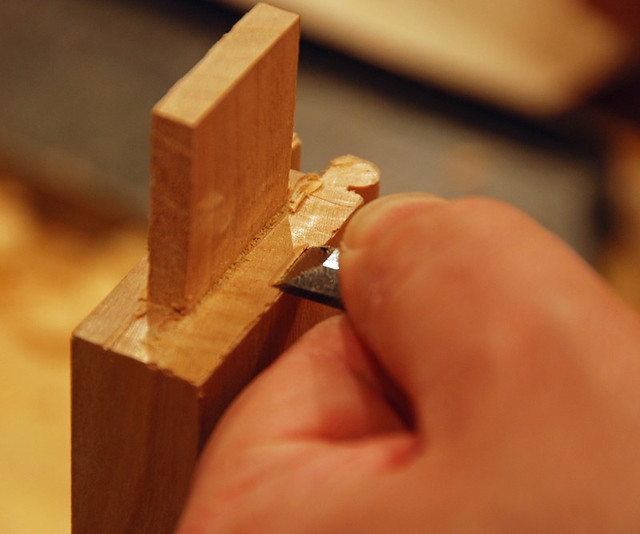I've cut a dozen or so dovetail joints in the last couple months, and other than a few practice pieces, that's the extent of my dovetailing experience. I'm getting pretty comfortable with the entire process, save for one step: cutting the shoulders. For some reason, when I switch to cut across the grain, I get really scared. My results never come out well. I've tried cutting shy of the line and chiseling to it, but the end grain is usually somewhat difficult, and it rarely turns out how I want it. And my cross-grain sawing could be better. Still, I'm able to saw to a line when making rip cuts during the dovetailing process.
Any simple tricks for the shoulders you could pass along? It's such a visible part of the joint that I really need to get over my fears and find a way to improve.




 Reply With Quote
Reply With Quote








